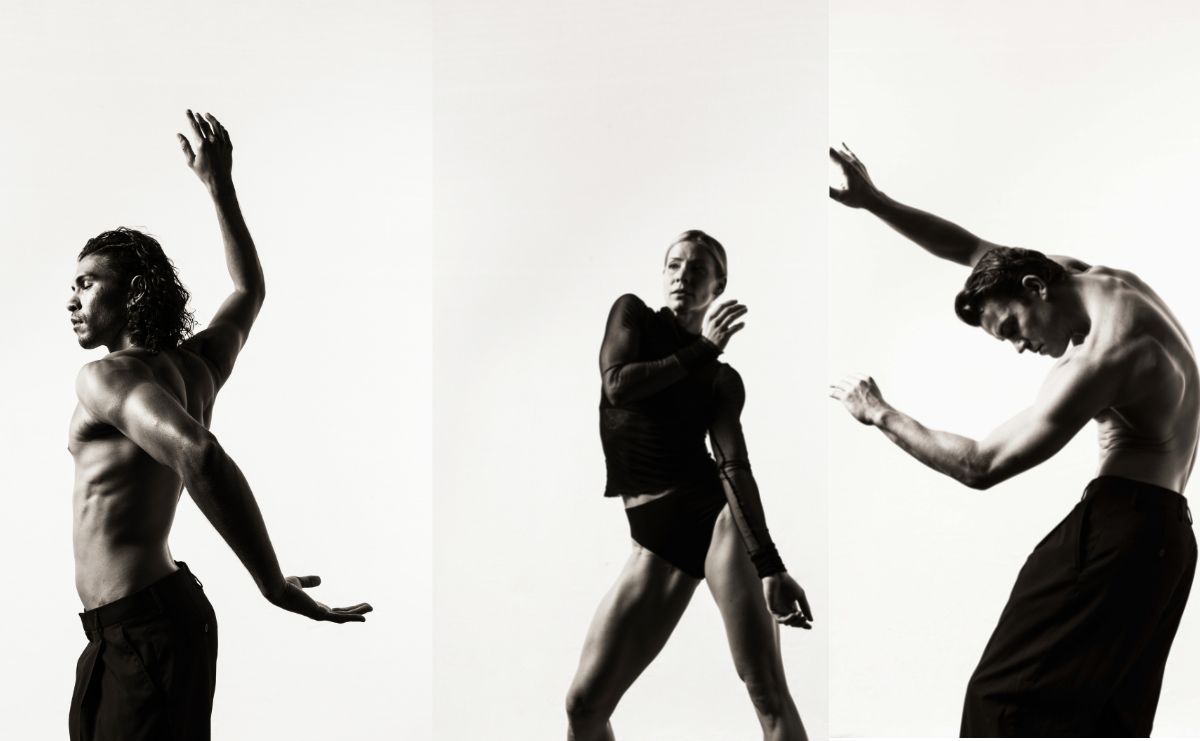With its premiere and many of its representations postponed, Three 2.0 is Australasian Dance Collective’s highly-anticipated production of choreographers Melanie Lane, Jack Lister and Hofesh Shechter.
The wait, however, foregrounded Three as a cry of the body for togetherness, in a world touched by distancing rules, dance painstakingly embeds the longing for connection.
Six exceptional dancers, including creator Lister himself, engage in routines that interrogate our ways of being and knowing in the world. Intensely physical, their movements blend desire with the restive discipline of muscles, proposing the flesh as site of aesthetic and emotional exploration.
Opening the program, Alterum by Lane explores the body caught between its possibilities and limitations. Drawing upon histories of mythological creatures and pop-culture superheroes, the piece is a reflection on interconnectiveness and mixity. The industrial meets the organic humanness in an alternative, sexually undifferentiated form of re-embodiment.
Convoluted and sinuous, each move becomes a way of escaping from the body in the yearn for union that is almost becoming-other. The slick, leather-laden costumes of Alana Sargent visually sustain the search of flesh outside the finite materiality of its own corporeal shape.
Next piece is Lister’s Still Life, inspired by Vanitas and Memento Mori traditions of 16th and 17th Dutch painting. Set in an art gallery, it brings to the fore contradictions of private and public, transience and permanency, intimacy and detachment.
But ‘the piece we’ve created is really about time’, points out Lister, ‘taking the medium of visual art which is, at its core, a permanent artform, and translating it into our artform which is only ever transient and impermanent and in that moment, and we build these shapes that only last for seconds, and then they dissipate.’
Ultimately, it is a dialogue between visual arts and dance. To the lasting of paints, dance responds with temporary drawings. Glenn Hughes’s lighting design marvellously stresses further the fusion of arts.
Concluding the evening, Schechter’s Cult captures the relation of the enfleshed self with the world around it. A 2004 piece, it exploits the medium of text, with spoken and wall-projected words stretching the physicality of dance.
Carrying the linkage between potency and a poetry that it is not primarily word, movements are electrifying and dazzling, vanishing in the enthralling darkness of the stage. The rawness of feeling and emotion is, again, recovered in the body.
Bright red dresses contrasting plain brown suits add another layer to visuals of the aloneness, powers and struggles of the individual in an anguished world.
Read: Theatre review: Secrets
Choreographers’ ‘profound talent for connecting to audiences’ is for Artistic Director Amy Hollingsworth, the convergent thread of this triple bill. Nonetheless, reconfiguration of the body as centre of subjectivity across themes and contexts enforces the interrelatedness of routines. Exploring roles that body plays in social, cultural, and psychical life, all pieces propose movement as expressions of both the desired and of the repressed.
Three 2.0
Australasian Dance Collective & Queensland Performing Arts Centre
Brisbane Powerhouse
Artistic Director: Amy Hollingsworth
Choreographers: Kate Harman, Cass Mortimer Eipper and Gabrielle Nankivell
Three was performed from 13-16 July 2022





